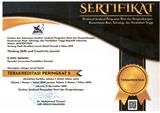Kajian Aksiologi terhadap Teknik Cryonics sebagai Solusi Menuju Kehidupan Kedua
DOI:
https://doi.org/10.23887/jfi.v1i1.13968Abstract
Improving science and technology is done to eliminate human boundaries and achieve happiness. The death that leads to grief tries to overcome. The concept of immortality is finally born from cryonics techniques. Using the library research method analyzed that, the cryonics technique provides an opportunity to live again in the future, after the death of an incurable illness today. But this technique is contrary to the ethical and aesthetic aspects of Indonesia. The belief in God is shaken by its incompatibility with the potentialities of the cryonics technique. The shift in the meaning of death both scientifically and legally needs to be reexamined. A view of the axiological study of cryonics techniques needs to be studied in more depth, especially so as not to become a problem in the future.
References
Andjus, R. K. & Lovelock, J. E. (1955). Reanimation of rats from body tempreaturesbetween 0 and I°C by microwave diathermy.J. Physiol (I955). I(28). 541–546.
Barbaro, V. (2011). Heaven for Atheis.The Humanist. 71(4). 24–29.
Bernstein, A. (2015). Freeze, die, come to life: The many paths to immortality in post-Soviet Russia.American Ethnologist. 42(4). 766–781.Best,
B. P. (2008). Scientific Justification of Cryonics Practice.Rejuvenation Research. 11(2). 493–503.Briton, K. (2017). Philosophy and The Meaning of Life Filsafat sebagai Lentera Kehidupan Edisi Terjemahan. Jogjakarta: Ar-Ruzz Media.
Budiyanti, R. T. (2016). Teknologi Cryonics dalam Perspektif Etika dan Hukum. 43(8). 626–629.
Cron, R. (2014). “Is Cryonics an Ethical Means of Life Extension?”. University of Exeter. 1–29.
Damm, M. (2011). Kematian Sebuah Risalah tentang Eksistensi dan Ketiadaan. Depok: Kepik.
Firman, H. 2018. FilsafatSains. Program studi Pendidikan Ilmu Pengetahuan Alam, Sekolah Pascasarjana, Universitas Pendidikan Indonesia. Tidak diterbitkan.
LaBouff, J. P. (1992). “He wants to do what?” Cryonics: issues in questionable medicine and self-determination. Santa Clara computer and hightechnology law journal. 8(2). 469–498.
Lafontaine, C. (2009). The Postmortal Condition: From the Biomedical Deconstruction of Death to the Extension of Longevity. Science as Culture. 18(3). 297–312.
Lohmeier, J. et al. (2015). Social profile and attitudes of cryonics advocates and deniers in Germany: a representative study. Mortality. 20(3). 263–279.
Moen, O. M. (2015). The case for cryonics. Journal of Medical Ethics. 41(8). 677–681. Nirawana, H. A. (2015).
Nirwana dan Cara Pencapaiannya dalam Agama Hindu. Jurnal Al-Adyaan. I(2). 99–103.
Oxford, E. N. (2003). Oxford Dictionary of Physics. Oxford Uni. Oxford: Oxford University Press.
Pandhi, A. (2015). Chilling legalities of cryopreservation. International Journal of Sosio-Legal Analysis and Rural Development. 3(II). 96–105.
Roach, J. 2007. Antifreeze-Like Blood Lets Frog Freeze and Thaw with Winter’s Whims. (https://news.nationalgeographic.com/news/2007/02/070220-frog-antifreeze.html).
Sydney Morning Herald. 2006. Doctors claim suspended animation success. (https://www.smh.com.au/news/health-and-fitness/doctors-claim-suspended-animation-success/2006/01/20/1137553739997.html).
Shaw, D. M. (2009). Cryoethics: seeking life after death. Bioethics. 23 (9).515–521.
Thomson, H. (2016). The big freeze. New Scientist. 231(3080), 26–31.
Wiramihardja, S. A. 2009. Pengantar Filsafat: Sistematika dan Sejarah Filsafat, Logika dan Filsafat Ilmu (Epistemologi), Metafisika dan Filsafat Manusia, Aksiologi. Bandung: PT. Refika Aditama.
Downloads
Published
Issue
Section
License

Jurnal Filsafat Indonesia Undiksha is licensed under a Creative Commons Attribution-ShareAlike 4.0 International License.



